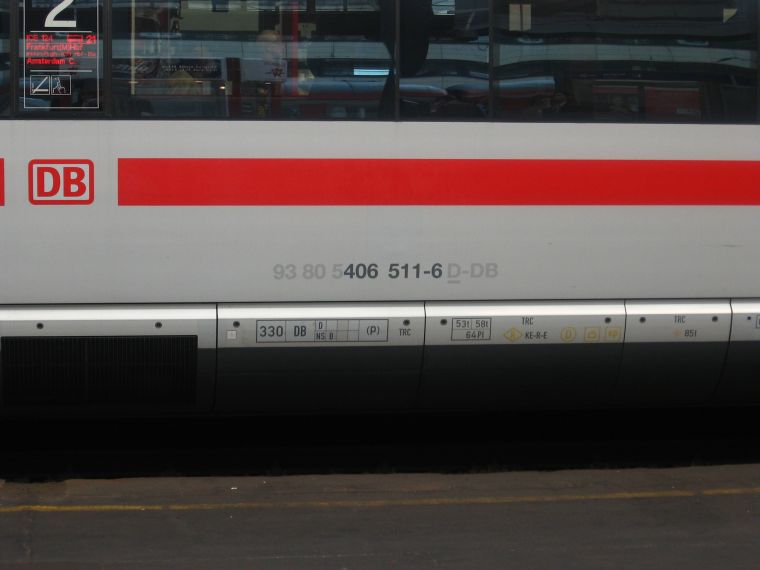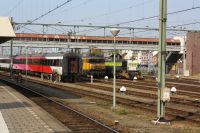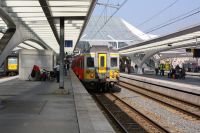Intermission: Electrically Controlled Pneumatic Brakes

Posted: 12 October 2008

This work is licensed under a Creative Commons Germany license.
Notes
This is a short intermission, I’ll continue with pictures from my trip tomorrow.
In the comments on Friction by classictrains there is an interesting discussion about electrically controlled pneumatic brakes. I thought I’d post something about how it’s done ineurope.
Normal brakes, found here on many regional trains and almost all freight trains, are directly connected to an air hose. The more pressure there is in the brake line, the less the brakes are applied. It’s counter-intuitive, but ensures that if the brake hoses are disconnected unintentionally, the train will immediately go into an emergency brake. An electronic brake instead transmits the data about how to brake electronically (hence the name), and is used on all fast passenger trains here, such as this ICE 3M in Cologne central station. It’s signified by the yellow “ep” in the square marking on the access panels below.
The advatange of an electronically controlled brake is that it’s fast. Any delay in the transmission of electronic signals can be safely ignored. A pneumatic-only brake, on the other hand, will take it’s time transmitting braking information. It’s by the way, not with the speed of sound, but slower. Individual air molecules may travel with the speed of sound (although I’d check this back with a physician before telling this to any children who place unquestioning faith in me), but since the width of the hoses is limited, the air cannot get there all at once, and it takes far more time for the pressure to reach the correct value everywhere. That means the train is slower to break, and also that different parts of the train will have to travel at different times, which has to be absorbed by the coupling slack.
However, the main point is that a classic pneumatic brake does not brake enough for fast trains. It just can not not give enough deceleration, and it’s dependent on the weather - a train will brake worse on wet rails than on dry ones. A common cure for this is the track brake, basically a bunch of metal that acts as an electric magnet and, when activated, pulls itself to the rails, which causes a lot of friction and hence braking, even in bad weather. You cannot control such a brake with the normal pneumatic line, or at least you normally don’t want to. The ICE 3, in fact, is more advanced and uses an eddy current brake. This creates a magnetic flow perpendicular to the rails, which in turn creates a force that (if correctly controlled) acts against the train movement, and all of this without anything actually touching anything else.
Another issue is regenerative braking. Like a hybrid car, most modern electric locomotives and EMUs can use their traction motors as generators and feed electricity back into the net (there’s no need for batteries here). If two or more locomotives or EMUs are coupled, the information for this kind of brake can also only be transmitted electronically. So here in europe, there’s really no choice other than an electronically controlled braking system.
While we’re at it, the rest of the labels is interesting as well. I don’t understand even half of them myself, but you can get some interesting information from it nevertheless. First, the big box to the left, contains, from left to right, first the trains top speed in kph (330 kph is 205 mph. They don’t call this train high-speed for nothing), then the country or railroad administration to which it belongs (here DB), then the countries and railroad administrations where it’s homologated to drive (here Belgium and the Netherlands, in addition to Germany), and finally a p in brackets that I don’t understand myself. The smaller box has first the empty weight, then the loaded weight, and below the number of seats this carriage offers. Finally, to the left of the “ep” sign, there is a handle in a box, also yellow. This indicates that this train can override a passenger-initiated emergency braking. The idea is that the train will not come to stop inside a longer tunnel in the case of a real emergency.

 Deutsche Version
Deutsche Version Entire Gallery
Entire Gallery

 Next Picture
Next Picture
 Previous Picture
Previous Picture